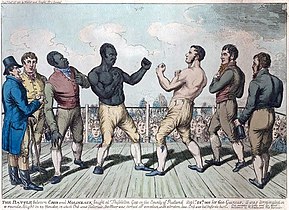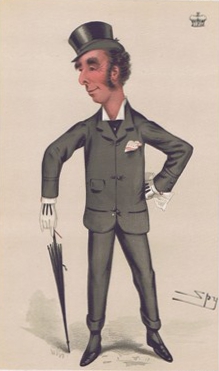
The Marquess of Queensberry Rules, also known as Queensbury Rules, are a code of generally accepted rules in the sport of boxing. Drafted in London in 1865 and published in 1867, they were named so as the 9th Marquess of Queensberry publicly endorsed the code, although they were written by a Welsh sportsman named John Graham Chambers from Llanelli, Carmarthenshire. The code of rules on which modern boxing is based, the Queensberry rules were the first to mandate the use of gloves in boxing.

Thomas Molineaux, sometimes spelled Molyneaux or Molyneux, was an American bare-knuckle boxer and possibly a formerly enslaved person. He spent much of his career in the United Kingdom of Great Britain and Ireland, where he had notable successes. He arrived in England in 1809 and started his fighting career there in 1810. His two fights against Tom Cribb, widely viewed as the Champion of England, brought Molineaux fame even though he lost both contests. The result of the first encounter was hotly contested, with accusations of a fix. The second match with Cribb, however, was an undisputed loss. His prizefighting career ended in 1815. After a tour that took him to Scotland and Ireland, he died in Galway, Ireland, in 1818 at age 34.

James "Jem" Mace was an English boxing champion, primarily during the bare-knuckle era. He was born at Beeston, Norfolk. Although nicknamed "The Gypsy", he denied Romani ethnicity in his autobiography. Fighting in England, at the height of his career between 1860 and 1866, he won the English Welterweight, Heavyweight, and Middleweight Championships and was considered one of the most scientific boxers of the era. Most impressively, he held the World Heavyweight Championship from 1870 to 1871 while fighting in the United States.

The London Prize Ring Rules were a list of boxing rules promulgated in 1838 and revised in 1853. These rules were based on those drafted by England's Jack Broughton in 1743 and governed the conduct of prizefighting/ bare-knuckle boxing for over 100 years. They "introduced measures that remain in effect for professional boxing to this day, such as outlawing butting, gouging, scratching, kicking, hitting a man while down, holding the ropes, and using resin, stones or hard objects in the hands, and biting." They were later superseded by the Marquess of Queensberry Rules, which were the origin of the modern sport of boxing.

Nat Langham was an English middleweight bare-knuckle prize fighter. He had the distinction of being the only person ever to beat Thomas Sayers while defending the English middleweight championship. Langham first took the championship by defeating George Gutteridge on 23 November 1846. Langham was considered a scientific boxer, and known for using sharp, well-timed blows, particularly with his left, though he was right handed. He was a 1992 inductee into the International Boxing Hall of Fame and a mentor to the British boxers Tom King and Jem Mace.

Simon Byrne, nicknamed "The Emerald Gem", was an Irish bare-knuckle prize fighter. The heavyweight boxing champion of Ireland, he was drawn to England by the larger sums of prize money on offer and his hopes of becoming the heavyweight champion there as well. He became one of only six fighters ever to have been involved in fatal fights as both survivor and deceased since records began in 1741.

Tom King also known as "The Fighting Sailor" was an English boxer who fought both bare-knuckle and with gloves. Strong, fast, and durable he was a skilled pugilist. One of his quirkier pre-fight rituals was to drink a tot of gin before every bout. He retired from the ring in 1863, as the Heavyweight Champion of England, following his defeat of the reigning champion Jem Mace and American contender John C. Heenan.
Nicholas Ward was an English bare-knuckle fighter. Nick Ward was the heavyweight champion of England for four months in 1841. His first recorded fight was in 1835 against Harry John Lockyer. In 1840 he fought his brother Jem Ward's old enemy James Burke; Burke was a feared and dangerous fighter, who had killed one opponent, the champion Simon Byrne. Following the match Jem Ward had refused to fight Burke, would not hand over the championship belt or acknowledge Burke as the heavyweight champion, even after he was acquitted of murder. Nick Ward won the bout against Burke when his gang of supporters forced the referee to disqualify Burke for an alleged foul. This winning pattern was repeated when in February 1841 Ward became heavyweight champion. He beat Ben Caunt, the reigning champion, when Caunt was disqualified, after the referee succumbed to pressure from the crowd claiming Caunt hit Ward while he was down. In May of the same year Caunt legitimately beat Ward and regained his title. At this time boxing was governed by the less than arduous London Prize Ring rules. The more strict and fair Queensbury rules were not implemented until much later in the century.
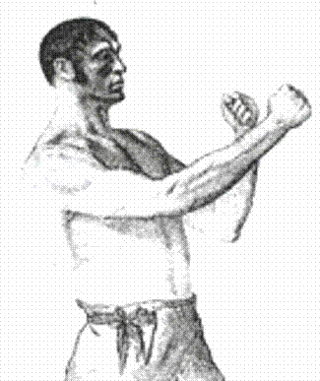
Tom Spring was an English bare-knuckle fighter. He was champion of England from 1822 until his retirement in 1824. After his retirement he became landlord of the Castle Inn at Holborn in London, where he arranged the patronage and contracts of many of the major boxing events of the period while overseeing fair play in the ring.
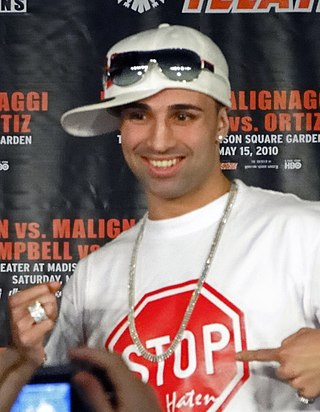
Paul "Paulie" Malignaggi is an Italian-American former professional boxer who competed from 2001 to 2017 and has since worked as a boxing commentator and analyst, currently with BYB Extreme Bare Knuckle Fighting Series and ProBox TV alongside Mike Goldberg. He held world championships in two weight classes, including the IBF junior welterweight title from 2007 to 2008, and the WBA welterweight title from 2012 to 2013. Malignaggi competed once as a bare knuckle boxer in 2019 in a loss to MMA fighter Artem Lobov. Malignaggi was particularly known for his hand speed, boxing ability, athleticism, and durable chin.
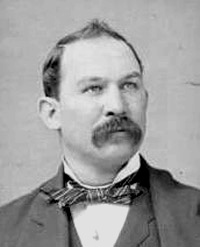
Joseph Goss (1837-1885) was an English bare knuckle boxer. He emigranted to the United States of America in 1867. After defeating Tom Allen in Boone County, Kentucky, he held the American and what many boxing historians now consider the World Heavyweight boxing championship from 7 September 1876 to 30 May 1880. Although he rarely scaled more than 160 pounds, the clever and aggressive Goss routinely fought men both bigger and heavier than himself.
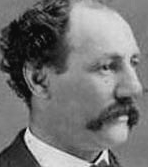
Joe Coburn was an Irish-American boxer. In 1862 he claimed the Heavyweight Championship from John Carmel Heenan when Heenan refused to fight him.
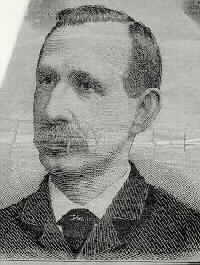
Young Barney Aaron was a bare-knuckle boxer.
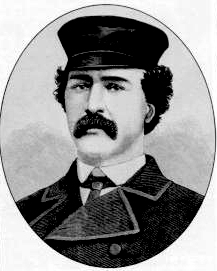
Tom Allen was a British bare-knuckle boxer who claimed the Heavyweight Championship from 1873, when he defeated Mike McCoole, until 1876, when he lost to Joe Goss. For much of his earlier career he fought just above the middleweight range, around 165-75, making him smaller than most of the heavyweights he met, he became an American citizen later in life.

Paddington Jones was a British bare-knuckle boxer from 1785 to 1805 who also worked extensively as a second.

James Belcher, also known as Jem Belcher, was an English bare-knuckle prize-fighter and Champion of All England 1800–1805.
Josh Burns is an American professional bare-knuckle boxer and former mixed martial artist. Since 2022, he has competed for BYB Extreme. From 2020 to 2021, Burns previously competed for Bare Knuckle Fighting Championship (BKFC).
Bare Knuckle Fighting Championship (BKFC) is an American bare-knuckle boxing promotion based in Philadelphia. BKFC is the first promotion to hold an official state-sanctioned and commissioned bare-knuckle boxing event in the United States since 1889. Its first event was held in 2018, with 49 "numbered" events held as of August 2023.
Bare Knuckle Fighting Championship United Kingdom (BKFC UK) is the British branch of the American bare-knuckle boxing promotion Bare Knuckle Fighting Championship (BKFC). In September 2022, it was announced that Bare Knuckle Fighting Championship had formed Bare Knuckle Fighting Championship UK (BKFC UK) by acquiring the UK-based Bare Fist Boxing Association (BFBA). As of April 2024, BKFC UK has held 6 events, all of which have taken place in England.
Bare Knuckle Fighting Championship Thailand (BKFC Thailand), officially known as Bare Knuckle Fighting Championship Asia (BKFC Asia), is a bare-knuckle boxing promotion based in Pattaya, Thailand. It is the officially licensed branch of Bare Knuckle Fighting Championship (BKFC) in Asia. BKFC Asia is the first promotion in Thailand and Asia to receive full international licensing and sanctioning for bare-knuckle boxing. Founded in 2021, BKFC Asia has held 5 total events as of November 2023.

